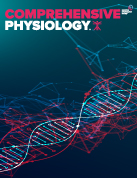
“The elucidation of Δ9-tetrahydrocannabinol as the active principal of Cannabis sativa in 1963 initiated a fruitful half-century of scientific discovery, culminating in the identification of the endocannabinoid signaling system, a previously unknown neuromodulatory system.
A primary function of the endocannabinoid signaling system is to maintain or recover homeostasis following psychological and physiological threats. We provide a brief introduction to the endocannabinoid signaling system and its role in synaptic plasticity.
The majority of the article is devoted to a summary of current knowledge regarding the role of endocannabinoid signaling as both a regulator of endocrine responses to stress and as an effector of glucocorticoid and corticotrophin-releasing hormone signaling in the brain.
We summarize data demonstrating that cannabinoid receptor 1 (CB1R) signaling can both inhibit and potentiate the activation of the hypothalamic-pituitary-adrenal axis by stress.
We present a hypothesis that the inhibitory arm has high endocannabinoid tone and also serves to enhance recovery to baseline following stress, while the potentiating arm is not tonically active but can be activated by exogenous agonists.
We discuss recent findings that corticotropin-releasing hormone in the amygdala enables hypothalamic-pituitary-adrenal axis activation via an increase in the catabolism of the endocannabinoid N-arachidonylethanolamine.
We review data supporting the hypotheses that CB1R activation is required for many glucocorticoid effects, particularly feedback inhibition of hypothalamic-pituitary-adrenal axis activation, and that glucocorticoids mobilize the endocannabinoid 2-arachidonoylglycerol.
These features of endocannabinoid signaling make it a tantalizing therapeutic target for treatment of stress-related disorders but to date, this promise is largely unrealized.”
https://www.ncbi.nlm.nih.gov/pubmed/28134998









